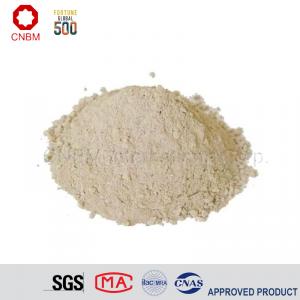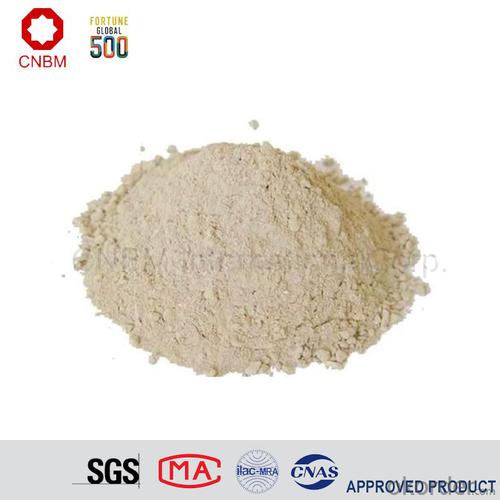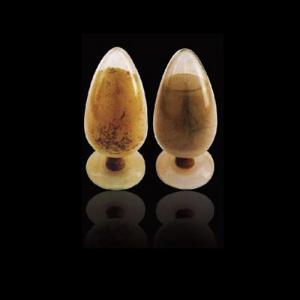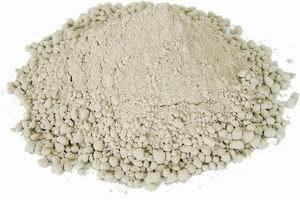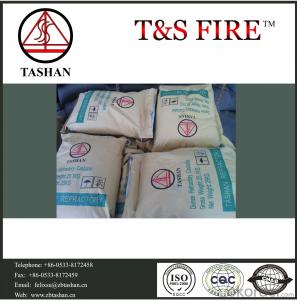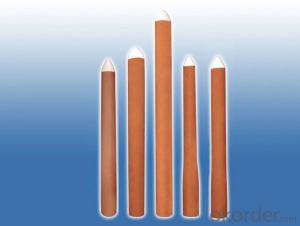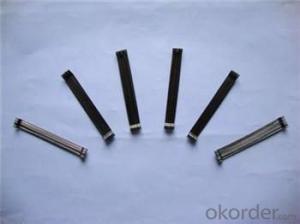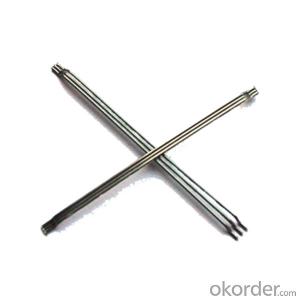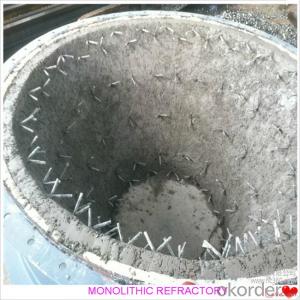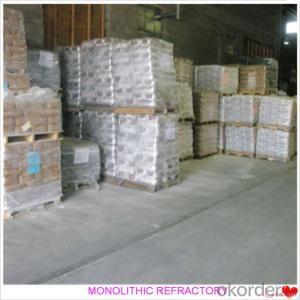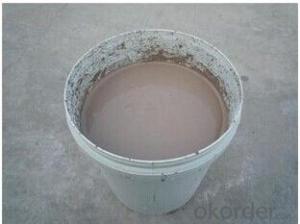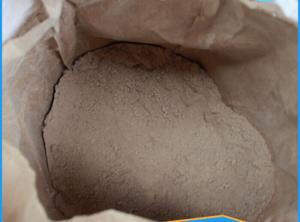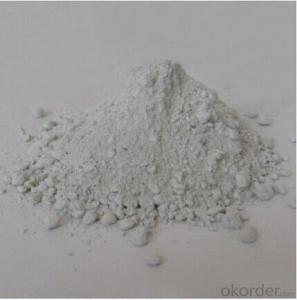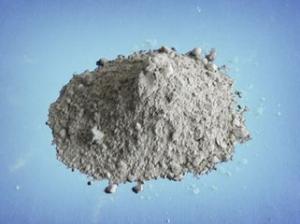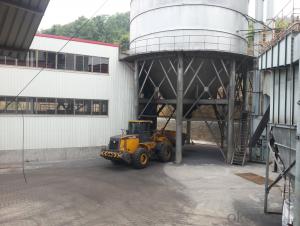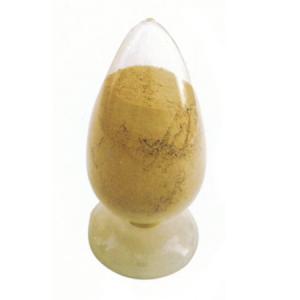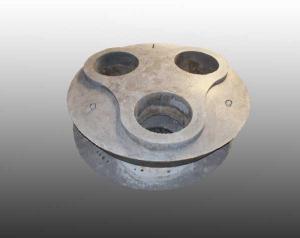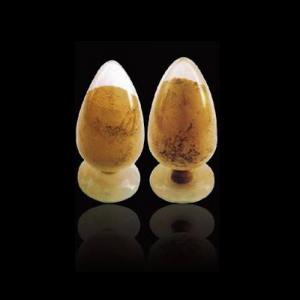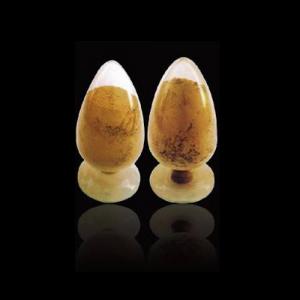Monolithic High Temperature Castable Refractory Cement for Iron and Steel Industry
- Loading Port:
- Dalian
- Payment Terms:
- TT or LC
- Min Order Qty:
- 23 m.t.
- Supply Capability:
- 60000 m.t./month
OKorder Service Pledge
OKorder Financial Service
You Might Also Like
Refractory Plants
Our plant is one of the research institutes on refractory materials in CNBM. It was set up in 2001. Taking the advantages of combining research,process,marketing and technical service,CNBM supply not only first-class refractory materials but also supply distinctive technical services.
·17 plants in different cities.
·Annual output is 5000,000 tons per year.
·ISO 9001:2008 certificated
·The products cover the refractory area of steel-making, cement, non-ferrous, glass, ceramic and others.
Physical And Chemical Indicators For Castable
| Brand Properties | HCA-180 | HCA-170 | HCA-160 | HCA-150 | HCA-140 | |
| ºC Application Limit Temp | 1,800 | 1,700 | 1,600 | 1,500 | 1,400 | |
Bulk Density (g/cm3) | 2.95 | 2.45 | 2.30 | 2.15 | 2.10 | |
| (%)Water Required for Casting | 8-11 | 10-14 | 10-14 | 11-15 | 11-15 | |
CCS/MOR (MPa) | at110ºCx24h | 60(10) | 45(8.5) | 40(8) | 40(8) | 35(6) |
| at1,200ºCx3h | 55(9.5) | 50(9) | 45(8.5) | 50(9) | 40(8) | |
| at1,400ºCx3h | 80(15) | 55(10) | 50(9) | 55(9.5) | 45(8.5) at1,300ºC | |
| (%) Permanent Linear Change | at110ºCx24h | -0.03 | -0.06 | -0.06 | -0.06 | -0.06 |
| at1,200ºCx3h | -0.1 | -0.2 | -0.2 | -0.15 | -0.15 | |
| at1,400ºCx3h | +0.4 | -0.3 | -0.2 | -0.3 | -0.4 at 1,300ºC | |
| (%) Chemical Analysis | Al203 | 91 | 76 | 63 | 52 | 48 |
| SiO2 | 1.5 | 15 | 27 | 40 | 44 | |
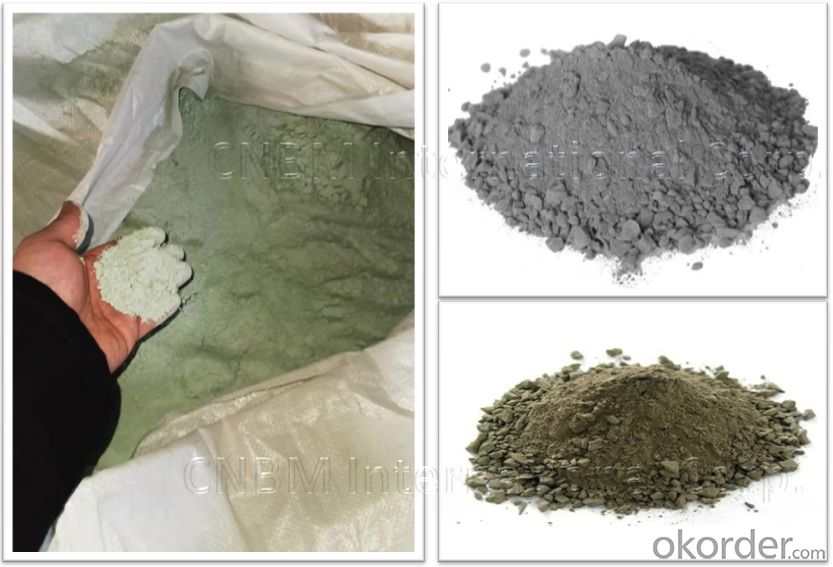
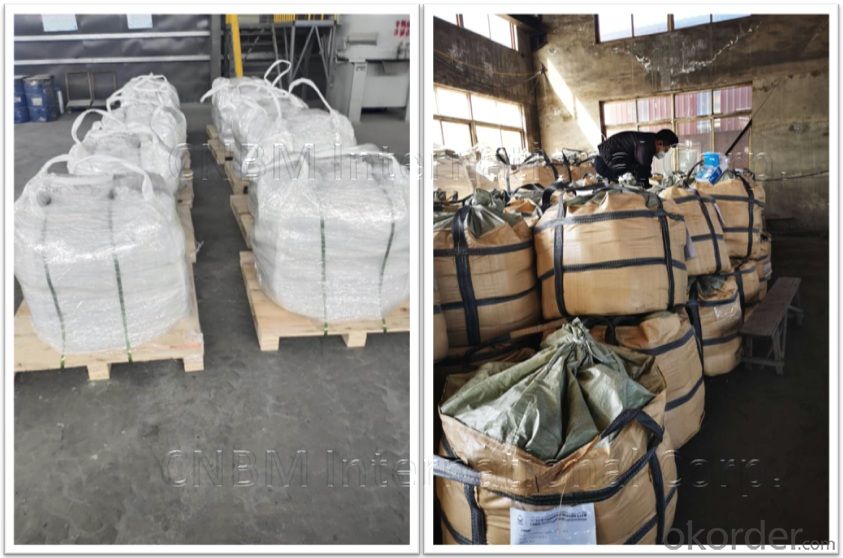
Features Of Castable
High refractoriness, High refractoriness under load
High density, low porosity
Good slag resistance and corrosion resistance
High strength and wear resistance
Good resistance to flake performance
Good thermal shock stability
Scouring resistance
Good hot strength.
Applications Of Castable
Nonferrous Metal Furnace
Various Incinerator
Reheating Furnace
EAF, Ladle, Tundish, etc.
Specifications Of Castable
It is widely used in key area of linings in metallurgical industry, petrochemical industry, power plant, construction field and other industries. Especially for the areas where easily worn and broken
Company Profile
CNBM INTERNATIONAL CORPORATION
Build your world with our materials.
We are a primary subsidiary of China National Building Material Group Co., Ltd.
CNBM Group is a central government-owned enterprise and a Fortune Global 500 company (Ranking 203th in 2019). It is the largest building material manufacturer and service provider in the world, with 15 publicly-listed companies and over 180,000 employees (2019). We have more than 300 factory plants in China. For the refractory, we are top 3 in China. We have more than 17 plants in different cities.
Proprietary Technology & Patented Products
Refractory technology
All process are conform to ISO9001 quality control systems
(1)The test of raw materials
★For all raw materials, the purchase department give the test report to the quality supervision department.
(2)The control of production
★Each batch products will be tested
★The quality supervision department record all test result.
(3)Test Before Production
★Before packing, the quality supervision department test the chemical content and physical
★Only quality products can be delivery.
★The delivery department check the package, quantity, name, code, production date, etc.
(4)Quality Traceability Analysis
★Track the products after using and get the feedback of performance.
If customer required, we will give the customer technical solutions and also improve the products.
Damage Mechanism Analysis and Improvement
★ For the maintenance project, CNBM will check the damage condition of the refractory materials in the furnace carefully.
★And then CNBM will give the damage mechanism analysis report to the customer.And CNBM also will provide products improvement solutions to extend the products' service life.
Technical Solution& Construction
★Optimization solutions of the original design to the customer.
★Consultation Service of Refractories Technology
★Technical Staff Training in Refractories Technology
★Specialized Design and Refractories Selection
FAQ
Q:Are you a trading company or manufacturer?
A:CNBM is a large-scale central governmental industrial group with its own manufacturing sector, research and development sector, trading sector and logistics sector.
Q:I have some special requirement about specifications.
A:We have a well-rounded product range, which endows us with the capability of applying many special specifications. Please feel free to contact us with yours.
Q:Do you accept OEM service?
A:Yes, we do.
Q:What is your delivery time?
A:It depends on the size/complexity of your order and our own production schedule. Usually we provide a faster delivery than the industry's average.
Q:What is the payment term?
A:Our payment terms are negotiable.
Q:Can I have my own logo on the product?
A:Sure, we can apply your own logo on the products according to your drawings.
- Q: How are monolithic refractories inspected and tested for quality assurance?
- Monolithic refractories are inspected and tested for quality assurance through various methods. Visual inspections are conducted to check for any visible defects such as cracks, spalling, or other physical damages. In addition, non-destructive testing techniques like ultrasonic testing and X-ray inspection are used to detect any internal flaws or inconsistencies in the refractory material. Furthermore, mechanical testing such as compression and flexural strength tests are performed to evaluate the mechanical properties of the monolithic refractories. These inspections and tests ensure that the refractories meet the required quality standards and can withstand the harsh operating conditions they are designed for.
- Q: How do monolithic refractories perform in aluminum holding furnace applications?
- Monolithic refractories have proven to be highly efficient and effective in aluminum holding furnace applications. These refractories are specifically designed to withstand the extreme temperatures and chemical environments encountered in these furnaces. One key advantage of monolithic refractories is their ability to form a continuous, seamless lining in the furnace. This eliminates the need for individual bricks or tiles, reducing the risk of thermal shock and cracking. The absence of joints also minimizes the chances of molten aluminum leaking through the lining, ensuring better containment and heat retention. Monolithic refractories also offer excellent thermal insulation properties, which are crucial in aluminum holding furnaces. They have low thermal conductivity, which helps to reduce heat loss and maintain a stable temperature within the furnace. This results in improved energy efficiency and reduced operating costs. Moreover, monolithic refractories have excellent resistance to corrosion and chemical attack from molten aluminum and its by-products, such as dross and fluxes. This resistance ensures a longer service life for the refractory lining, reducing maintenance and downtime. Additionally, monolithic refractories are known for their easy installation and repair. They can be installed quickly and easily, requiring minimal downtime for furnace maintenance. In case of any localized damage or wear, repairs can be made efficiently by patching or spraying the affected area. In summary, monolithic refractories are an ideal choice for aluminum holding furnace applications due to their seamless lining, thermal insulation properties, resistance to corrosion, and easy installation and repair. These refractories significantly contribute to the overall performance and efficiency of aluminum holding furnaces.
- Q: How are monolithic refractories used in the repair and maintenance of ladle and tundish covers?
- Monolithic refractories are commonly used in the repair and maintenance of ladle and tundish covers due to their excellent thermal resistance and durability. Ladles and tundishes are crucial components in the steelmaking process, and their covers play a vital role in the containment of molten metal and the prevention of heat loss. When ladle and tundish covers are subjected to high temperatures and thermal cycling, they can experience wear and tear, leading to cracks, spalling, or even complete failure. This is where monolithic refractories come into play. Monolithic refractories are unshaped refractory materials that can be easily molded and applied to the damaged areas of ladle and tundish covers. They can be cast, gunned, or sprayed onto the surface, allowing for quick and efficient repairs. These refractories are typically composed of a matrix material, such as alumina, silica, or magnesia, along with various additives and bonding agents. The specific composition depends on the application requirements and the severity of the operating conditions. The repair process begins by identifying the damaged areas of the ladle or tundish cover. Any loose or damaged refractory material is removed, and the surface is prepared for the application of the monolithic refractory. This may involve cleaning, roughening, or even preheating the surface, depending on the specific requirements. The monolithic refractory is then mixed with water or a suitable binder to form a workable consistency. It is then applied to the damaged areas using the appropriate method, such as casting or spraying. After application, the refractory material is allowed to dry and cure, typically through a controlled heating process. Once cured, the monolithic refractory forms a strong and durable lining that can withstand the high temperatures, thermal cycling, and chemical reactions that occur during ladle and tundish operation. It provides excellent thermal insulation, preventing heat loss and reducing energy consumption. Furthermore, monolithic refractories offer superior resistance to slag, metal penetration, and erosion, ensuring extended service life for ladle and tundish covers. They also have good thermal shock resistance, allowing them to withstand rapid temperature changes without cracking or spalling. In summary, monolithic refractories are essential in the repair and maintenance of ladle and tundish covers due to their thermal resistance, durability, and ease of application. Their ability to withstand high temperatures, thermal cycling, and chemical reactions ensures the integrity and efficiency of ladle and tundish operations in the steelmaking industry.
- Q: What are the specific requirements of monolithic refractories for blast furnace applications?
- Monolithic refractories used in blast furnace applications must possess specific attributes to withstand the extreme conditions within the furnace. These requirements include high thermal conductivity, excellent thermal shock resistance, superior erosion and abrasion resistance, and good chemical resistance to withstand the corrosive nature of molten iron and slag. Additionally, they should have low porosity to prevent the penetration of molten metal, high mechanical strength to withstand the weight of the burden, and good dimensional stability to maintain their shape and integrity during operation.
- Q: What are the considerations for repairing and relining monolithic refractories?
- When repairing and relining monolithic refractories, there are several important factors to take into account. Firstly, it is crucial to evaluate the level of damage or wear on the refractory lining. This can be achieved through visual inspection or non-destructive testing methods like ultrasonic or thermal imaging. By determining the severity and location of the damage, the appropriate repair or relining technique can be selected. Another aspect to consider is the type of monolithic refractory material being used. Different materials have varying properties and performance characteristics, which must be considered when choosing a repair method. For instance, certain materials may require specialized equipment or high-temperature curing during installation. The operational conditions of the refractory lining also play a significant role. Factors such as temperature, chemical exposure, and mechanical stress can impact the performance and durability of the lining. Therefore, it is essential to select a repair or relining method that can withstand these conditions and provide long-lasting protection. Furthermore, the downtime and cost implications of the repair or relining process need to be taken into account. Some methods may involve longer curing or drying times, resulting in extended shutdown periods. It is important to carefully evaluate the benefits of the repair or relining against the potential production losses and expenses associated with the downtime. Lastly, adhering to industry standards and guidelines is of utmost importance when repairing or relining monolithic refractories. This ensures that the repairs are executed correctly and safely, minimizing the risk of future damage or failure. Seeking advice from refractory experts or manufacturers can provide valuable insights and guidance in this regard. To summarize, the considerations for repairing and relining monolithic refractories encompass assessing the extent of damage, understanding the properties of the refractory material, considering the operating conditions, evaluating downtime and cost implications, and following industry standards and guidelines.
- Q: How do monolithic refractories withstand the thermal cycling in coke oven applications?
- Monolithic refractories are able to withstand the thermal cycling in coke oven applications due to their high thermal shock resistance and low thermal conductivity. They have a unique composition and structure that allows them to expand and contract without cracking or spalling under extreme temperature fluctuations. Additionally, their dense and homogeneous structure minimizes heat transfer, allowing them to maintain their integrity and strength even in the harsh conditions of coke oven operations.
- Q: How do monolithic refractories resist chemical attacks from molten metals and slag?
- Monolithic refractories are engineered to withstand chemical attacks caused by molten metals and slag. They possess various essential qualities that enable them to endure such harsh conditions. To begin with, monolithic refractories comprise top-notch materials with exceptional chemical resistance. These materials, including alumina, magnesia, and chrome, have a high melting point and remain stable even when exposed to extreme temperatures and corrosive substances. This chemical stability ensures that the refractory maintains its integrity and structural strength when in contact with molten metals and slag. Moreover, monolithic refractories have a compact and dense structure. This microstructure serves as a barrier, preventing molten metals and slag from penetrating the refractory material. By limiting the contact between the corrosive substances and the refractory, the dense structure reduces the likelihood of chemical reactions and erosion, thereby enhancing the refractory's resistance to chemical attacks. Additionally, monolithic refractories often contain additives and binders that enhance their chemical resistance. These additives form a protective layer on the refractory surface, acting as a shield against chemical attacks. They can also react with certain corrosive substances, forming stable compounds that further inhibit the penetration and corrosion of the refractory material. Furthermore, monolithic refractories are designed to have minimal porosity. This low porosity minimizes the absorption of molten metals and slag, preventing them from infiltrating the refractory and causing damage. By reducing the permeability of the material, the refractory can maintain its structural integrity and resist chemical attacks for extended periods. In conclusion, monolithic refractories withstand chemical attacks from molten metals and slag due to their high-quality materials, dense structure, additives, and low porosity. These combined properties enable the refractories to endure aggressive environments and maintain their performance and longevity in industrial applications.
- Q: What are monolithic refractories?
- Monolithic refractories, in contrast to individual bricks or precast shapes, are refractory materials that are manufactured as a single unit. They can be shaped and installed without the need for joints or mortar, making them convenient for lining furnaces, boilers, kilns, and other high-temperature industrial equipment. These refractories consist of a carefully selected mixture of refractory aggregates, binders, and additives. This combination provides desired properties such as high temperature resistance, thermal shock resistance, and chemical durability. Aggregates like alumina, magnesia, zirconia, and silica are used, while binders such as clay, cement, or phosphate hold the aggregates together. One advantage of monolithic refractories is their ability to adapt to complex shapes and designs, allowing for customized linings that meet specific equipment requirements. They can be applied through pouring, gunning, ramming, or spraying onto the surface to be lined, leading to quick and efficient installation. This eliminates the need for time-consuming bricklaying and jointing, reducing installation time and labor costs. Monolithic refractories also possess superior thermal conductivity, enabling them to withstand high temperatures and sudden temperature changes. They offer excellent insulation properties, preventing heat loss and improving energy efficiency in industrial processes. Additionally, these refractories exhibit good resistance to chemical attack from molten metals, slags, gases, and other corrosive substances found in various industrial environments. This makes them highly suitable for applications in steel, cement, glass, petrochemical, and non-ferrous metals industries. In conclusion, monolithic refractories are a versatile and efficient solution for high-temperature applications. Their ability to be shaped and installed without joints or mortar, combined with their excellent thermal conductivity and chemical resistance, make them a valuable choice for lining industrial equipment operating under extreme conditions.
- Q: How do monolithic refractories enhance the performance of ladle and tundish purging systems?
- The performance of ladle and tundish purging systems is greatly improved by the use of monolithic refractories. These refractories offer various advantages in enhancing the efficiency and effectiveness of the purging process. To begin with, the thermal insulation properties of monolithic refractories are exceptional. When impurities and gases need to be eliminated from molten metal, high temperatures are necessary. By utilizing monolithic refractories, heat loss is minimized, and the desired temperature within the system is maintained. This ensures that the purging process is carried out effectively and efficiently. Furthermore, monolithic refractories possess superior resistance to erosion and corrosion. The molten metal and purging gases can be corrosive and abrasive, making it essential for the lining to withstand such harsh conditions. Monolithic refractories are specifically designed to endure these circumstances, preventing erosion and corrosion. This contributes to the longevity of the ladle and tundish purging systems, reducing the need for frequent repairs or replacements. Additionally, monolithic refractories provide remarkable strength and stability. As molten metal and purging gases move within the system, significant mechanical stresses are experienced. The use of monolithic refractories ensures that the lining remains structurally sound, preventing any deformation or failure under these conditions. This guarantees smooth and uninterrupted purging operations, thus enhancing the overall performance of the system. Moreover, the installation and maintenance of monolithic refractories are straightforward. Unlike traditional brick and mortar refractories, monolithic refractories can be easily applied as a single, uniform layer. This simplifies the installation process and reduces the time and effort required for maintenance. Any necessary repairs or replacements can be conducted more efficiently, resulting in minimal downtime and maximum productivity for the ladle and tundish purging systems. In conclusion, monolithic refractories significantly improve the performance of ladle and tundish purging systems by providing excellent thermal insulation, erosion and corrosion resistance, strength and stability, as well as ease of installation and maintenance. These properties contribute to the efficient and effective removal of impurities and gases from molten metal, ensuring high-quality output and optimizing the overall productivity of the purging process.
- Q: How do monolithic refractories withstand chemical attack from molten metals and slag?
- Due to their unique composition and structure, monolithic refractories exhibit high resistance to chemical attack from molten metals and slag. Unlike refractories with joints or seams, monolithic refractories are made from a single, solid piece, minimizing the chance of chemical penetration. The ability to withstand chemical attack is attributed to several factors. Firstly, monolithic refractories have a high melting point, which surpasses the temperature of the molten substances they encounter. This prevents them from melting or deforming upon contact with hot metals or slag. Additionally, the chemical resistance of monolithic refractories is enhanced by their formulation with materials that possess excellent resistance to chemicals. These materials, such as alumina, magnesia, and zirconia, form stable compounds and have a strong affinity for oxygen. Consequently, when exposed to molten substances, the refractories develop a protective oxide layer on their surface, effectively shielding them from chemical attack. Furthermore, the dense and compact structure of monolithic refractories plays a crucial role in their ability to resist chemical attack. The absence of joints and seams reduces the chances of molten metals and slag infiltrating the refractories and initiating chemical reactions. This dense structure also reduces the porosity of the material, making it less permeable to aggressive substances. Moreover, manufacturers often incorporate specialized additives, such as fibers, binders, and corrosion inhibitors, into monolithic refractories to further enhance their chemical resistance. These additives contribute to the refractories' ability to withstand chemical attack. In conclusion, monolithic refractories are designed to endure chemical attack from molten metals and slag through their high melting point, chemically resistant composition, dense structure, and specialized additives. These properties enable them to maintain their integrity and performance even in the most challenging environments, making them an ideal choice for applications involving high temperatures and corrosive substances.
Send your message to us
Monolithic High Temperature Castable Refractory Cement for Iron and Steel Industry
- Loading Port:
- Dalian
- Payment Terms:
- TT or LC
- Min Order Qty:
- 23 m.t.
- Supply Capability:
- 60000 m.t./month
OKorder Service Pledge
OKorder Financial Service
Similar products
Hot products
Hot Searches
Related keywords
